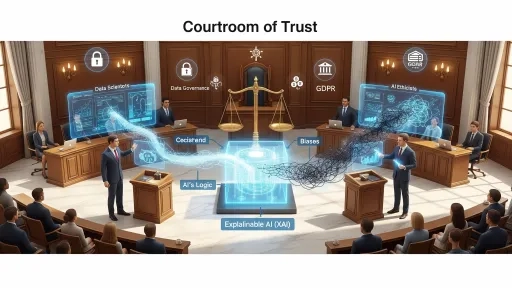AI changes the business landscape
AI reshapes business by creating new opportunities through data-driven insights and automation, but seizing them requires overcoming significant organizational hurdles. Success depends less on the technology alone and more on transforming the company's culture, skills, and processes to support it.
AI-Powered Opportunities
AI opens doors for businesses to operate more intelligently and efficiently. The primary opportunities include:

Enhanced Decision-Making: AI can analyze massive datasets to predict market trends, optimize pricing, and identify operational inefficiencies, leading to smarter, faster business decisions.
Hyper-Personalization: By understanding customer behavior at a granular level, companies can deliver highly tailored products, services, and marketing messages, dramatically improving customer engagement and loyalty.


Intelligent Automation: AI can automate complex processes beyond simple repetitive tasks, from supply chain management to financial analysis, freeing up human employees for higher-value strategic work.
Tackling Key Organizational Challenges
To capitalize on these opportunities, organizations must confront several internal challenges.
Cultivating a Data-First Culture
The biggest hurdle is often cultural. A successful AI strategy requires shifting from intuition-based decisions to a culture that values data, experimentation, and evidence.
Leadership Buy-In: Leadership must champion AI initiatives, not as isolated IT projects, but as core business strategy. They need to foster an environment where it's safe to experiment and learn from failures.
Breaking Down Silos: AI relies on vast, integrated datasets. Organizations must dismantle internal silos that trap data within specific departments (e.g., marketing, sales, operations) to create a single source of truth. This requires cross-functional collaboration and new governance models.

Bridging the Talent and Skills Gap
Having the right people is critical. This involves both hiring specialists and upskilling the entire workforce with a new layer of technical understanding.
Broadening Data Literacy: Beyond specialists, the entire workforce needs to be upskilled. This means developing widespread data literacy so employees can confidently use AI-powered software, interpret data dashboards, and understand the basic principles of how algorithms generate recommendations, without needing to be coders themselves.

Specialized Technical Skills: A core team of experts is essential. These roles require deep knowledge in areas like machine learning engineering, data science, and cloud computing to build and deploy AI models.
Redefining Roles: As AI automates tasks, job roles will evolve. The focus will shift from performing routine processes to supervising AI systems and analyzing their outputs, requiring a blend of domain expertise and digital skills.
Modernizing Data Infrastructure and Governance
AI is only as good as the data it’s fed. Many companies are hindered by outdated systems and poor data quality.
- Legacy Systems: Old, inflexible IT infrastructure can make it impossible to collect and process the data needed for modern AI. Modernization is often a prerequisite, requiring expertise in cloud platforms (like AWS, Azure, or GCP) and data engineering to build robust data pipelines.
- Data Governance: Organizations need robust frameworks for managing data quality, accessibility, privacy, and security. Without strong governance, AI models can be unreliable, biased, or non-compliant with regulations.

Integrating AI Ethically and Responsibly
Finally, building and maintaining trust is paramount. Rushing into AI without considering the ethical implications can lead to significant reputational and legal risks.

- Transparency and Explainability: Businesses must be able to explain how their AI models make decisions, especially in critical areas like lending or hiring. This "explainable AI" (XAI) is crucial for debugging, ensuring fairness, and gaining user trust.
- Bias Mitigation: AI models trained on biased historical data will produce biased outcomes. Organizations must actively audit and correct for bias to ensure fair and equitable results.